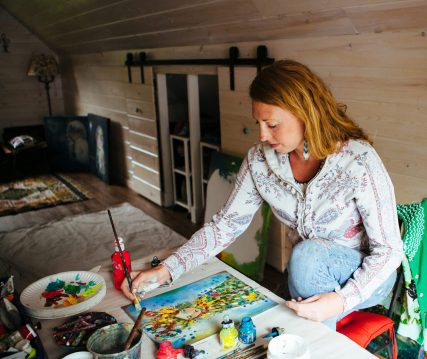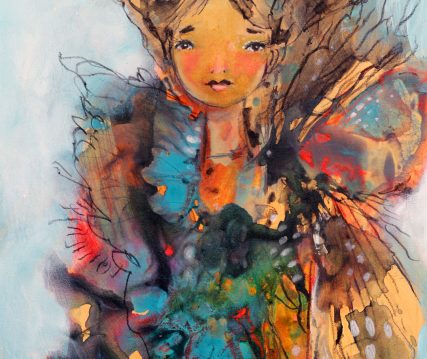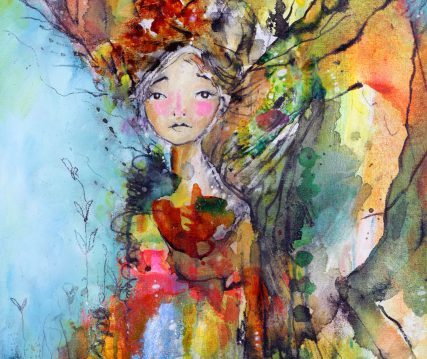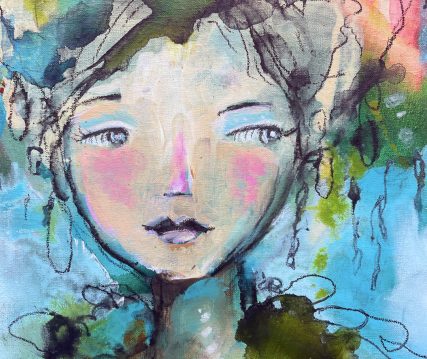No products in the cart.
Return To ShopThese last few weeks, I’ve been painting a new collection inspired by peace and new beginnings..
This new painting is a small study for one of the larger pieces I’m working on – she’s called Truth Speaks, Mixed Media, 12” x 12”.
Autumn is stunning right now as all the leaves are full of color here in Wisconsin, so I’ve kept her color palette vibrant – with a reflection of the bluest morning sky. Nature and the tallest pine trees outside of my studio look stunning as the sun rises and sets – full of hope and majesty.
She’s a reminder to carry love and peace through the changing seasons.
The colors have been such an inspiration. While they’re incredibly vibrant, especially in the sunlight, I can never quite capture that same saturation in my paintings.
But I do come close whenever I build up my layers.
If you ever worry about ending up with mud as you mix color, here are a few simple guidelines I follow…
These are the color combinations that will definitely go brown:
- Don’t mix blue with orange (red and yellow together)
- Don’t mix red with green (blue and yellow together)
- Don’t mix yellow with purple (red and blue together)
You usually won’t get browns when you only mix two of the three primary colors (red, blue, and yellow) or variations of those colors (pink is a variation of red, and turquoise is a variation of blue):
- DO mix blues and reds, or blues and pinks, or neon pink with turquoise and white – these will all give you variations of purple and blues
- DO mix yellows with reds, or yellow with neon pink – these will give you variations of oranges, yellows, pinks, and reds
- DO mix blues with yellows, or yellow with turquoise, or yellow and cobalt blue with white – these will give you variations of greens and blues
If you stick with these DOs, then you can feel more free to experiment, and, as you continue to experiment, you’ll find more color combinations you like.
Another tip is to add color in layers and let your color dry in between layers:
- Add one initial layer of one color hue, say mostly blues or mostly reds and pinks.
- Then, once that first layer dries, add a translucent color on top, say a cadmium yellow acrylic ink mixed with a neon pink high flow acrylic paint.
That way, you’ll not only avoid making brown but also get so much variation and luminosity from the layers.
Whenever I do start to make brown, I stop. Once the painting has dried, I add more color. Often, a sheer color on top can transform the muddy hue underneath into something new and unexpectedly beautiful.
Happy Painting!
xo Juliette
PS I’ve also recently started writing on Substack – I’ll be sharing more in-depth about my art, process and creative living. You can read more about my journey, subscribe, say hello, and leave a comment HERE. I’m excited to connect with you there!
Comments are closed




HELLO
I'M JULIETTE
A painter, writer, and creator of The School Of Happy Painting, online courses to help you loosen up, let go, and develop your own unique style.
Join me for a Free Workshop!
Want to know how I create my paintings? Join this free workshop to learn the fundamental principles I use to paint with style and whimsy, from covering up the white space to final artwork. Follow along to paint your own character in 30 minutes.





